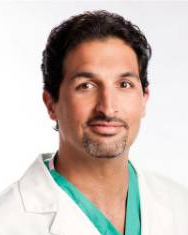
Joseph V Lombardi, MD, FACS
May marks Stroke Awareness Month, and according to the Centers for Disease Control and Prevention (CDC), more than 795,000 people in the United States have a stroke every year. Of that number, about 140,000 Americans will die each year from a stroke. While it is important to know the signs of stroke (drooping face, slurred speech, trouble walking, numbness in the face, arm, or legs) and seek immediate medical attention for the best outcomes, it’s also important to know that stroke can be prevented.
Understanding how to prevent a stroke, starts with understanding what a stroke is. A transient ischemic attack, or stroke, is an injury to the brain that can happen for a variety of reasons. One of the most common causes of stroke is plaque build-up in carotid arteries which carries blood to the brain. If the plaque is large enough, it can narrow the artery and disrupt blood flow so that small pieces can break off and travel up to the brain, causing a stroke.
Unfortunately, a buildup of plaque in the carotids frequently goes unnoticed. Sometimes it is discovered when a doctor hears soft, “whooshing” sounds caused by turbulence as blood tumbles through a narrowing in a carotid artery. Clogged carotids are sometimes found during ultrasound exams of the neck and head. For most people, though, the first sign of trouble is when a mini stroke, stroke, or visual disturbances occurs.
If your doctor finds plaque in a carotid artery, what is the next step?
Medications are sometimes helpful in reducing the risk of stroke, but unblocking the narrowed artery is the most definitive treatment. For more than 50 years, vascular surgeons have been operating through a small incision on the neck to remove the plaque and repair the carotid artery – a procedure called a carotid endarterectomy. Also, there are techniques to open the artery using balloons and stents. Both procedures are usually successful. Which procedure is safest depends on the individual characteristics of each patient, so it’s important to undergo an evaluation by doctors who are familiar with both techniques.
Common risk factors for stroke that can be controlled or treated include high LDL cholesterol levels, low HDL cholesterol levels, high blood pressure, smoking, diabetes, physical inactivity, and being overweight or obese.
Strokes are not always preventable, but if you know you are at risk for a stroke, contact your health care provider and get evaluated, it could save your life.
Joseph V Lombardi, MD, FACS, is the Head of the Division of Vascular and Endovascular Surgery at Cooper University Health Care. To learn more about our Stroke Program, click here.
